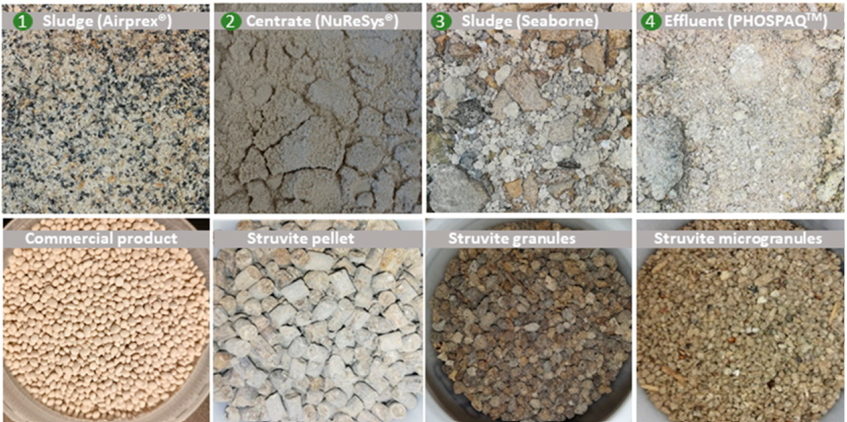Authors: Elke Bloem, Sophia Albert, Maria Thiel, Paul Keßeler, Joachim Clemens, Andreas Kolb
and Thomas Dockhorn
ABSTRACT
Struvite (MgNH4PO4ꞏ6H2O) is a precipitation product that can be obtained in municipal wastewater treatment plants (WWTPs) and represents a promising fertilizer and technical solution for phosphorus recovery. Struvite can be recovered from the wastewater stream, during sludge digestion or by accelerated acid leaching from sludge followed by solid–liquid separation and struvite precipitation from the liquid phase. Moreover, struvite can be precipitated from industrial effluents or agricultural wastes. The resulting products are of different purity. Antibiotic residues are a relevant class of contaminants as already traces can induce or promote the development of antibiotic resistance in the environment. The aim of the current study was a screening of struvite raw materials precipitated by different processes in German WWTPs for their contamination by selected antibiotics out of the classes of sulfonamides (SAs), fluoroquinolones (FQs) and tetracyclines (TCs). Slightly higher antibiotic residues were detected when struvite was precipitated from the solid phase with a maximum of 133 µg TCs, 484 µg FQs and 8 µg SAs compared to 8 µg TCs, 86 µg FQs and 9 µg SAs per kg dry weight (DW) when struvite was obtained from the liquid phase. FQs were most frequently found in low but quantifiable concentrations in almost all struvite raw materials. Yet, the contamination level of struvite from WWTPs can generally be regarded as low compared to sewage sludge. Products received from effluents from the food industry were found to be almost free of antibiotic residues.
Follow the link to read the full publication in Sustainability https://doi.org/10.3390/su16135726

